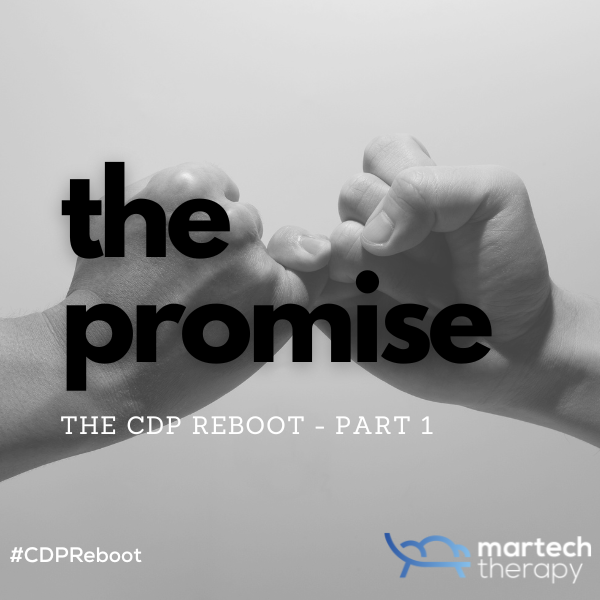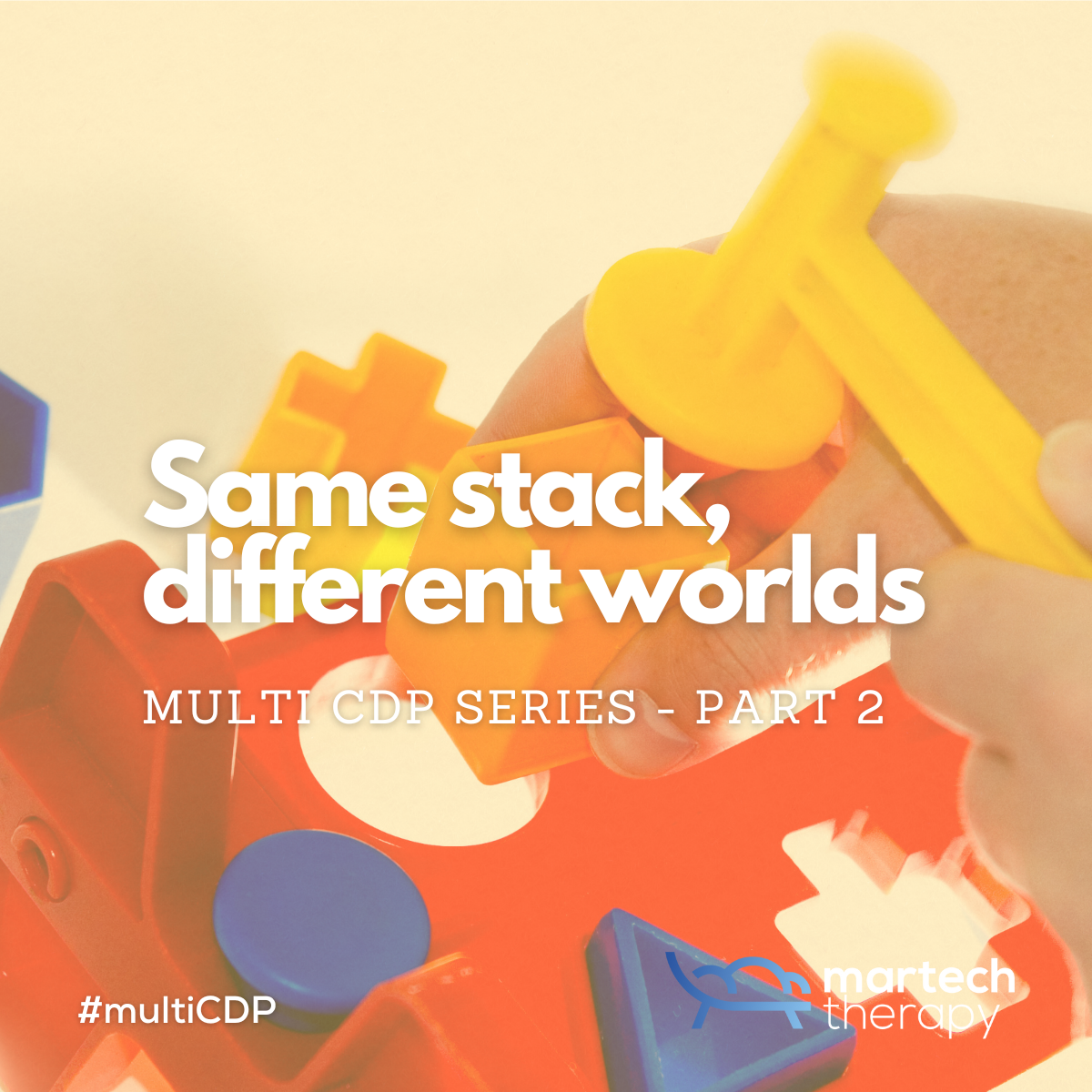If you’ve ever heard someone say, “We already have a CDP,” it’s worth asking two questions:
- What exactly do you mean by CDP?
- And who is “we” in this scenario?
Because most of the time, what one team considers the CDP is just a feature to another. And what’s sold as a single platform rarely acts like one across an entire company.
This is where David Chan’s Dual Zone model starts to feel less like a theory and more like an MRI. The Data Zone and the Engagement Zone reflect how stacks are split in real life. How org charts shape data pipelines. And how different teams define success.
Marketing wants action. The ability to launch campaigns, test messages, and personalize quickly. The Data Zone wants precision with clean joins, durable identity, and compliance.
And so we get two CDPs. Sometimes more.
Not always by design, but rarely by accident.
As I mentioned in Part 1, what might look like redundancy is often just role-based architecture. Most stacks aren’t built to be clean. They’re built to survive the way teams actually work.
Four patterns I keep seeing
You don’t need to squint to spot these. They show up again and again in different forms. See if one hits close to home:
- Primary + Backup: The official CDP handles governance. Meanwhile, marketing uses another tool, quietly or officially, for campaign targeting and personalization.
- Split-Zones: One CDP handles tagging, identity, and event ingestion. Another handles journeys and segmentation. Both get called “the CDP” in different meetings.
- Regionality: Each region, market, or brand picks its own stack. The global team tries to enforce standards from afar, with mixed results.
- Composable: A set of warehouse-native tools (like reverse ETL, identity resolution, and activation UIs) stitched together. It works. But only because someone’s connecting them behind the scenes.
Personally, regionality is the most common one I see, especially among enterprises. But don’t get me wrong, these patterns merely reflect how tools are bought and deployed. As noted in LXA’s State of Martech and Marketing Operations 2025 study, “Vendors are building tools to solve very different problems for different buyers. The expectation that these will somehow function as a coherent stack is… optimistic.”
I made a similar point in the CDP Reboot series, what’s sold as a platform often ends up functioning more like a collection of buyer-aligned feature sets. This is what happens when purchasing reflects organizational complexity.

As Alexander Dean from Snowplow recently put in a comment on LinkedIn:
“If you have one ‘CDP’ doing digital user personalization, and another ‘CDP’ doing customer master data management, do you really have 2 x CDPs?”
Fair question. But maybe a better one is:
If the setup works, do we care what we call it?
What this means for vendors and everyone else
Composable stacks were supposed to simplify things. Plug into the warehouse, sync your segments, let every team work off the same clean base. But that’s not how things tend to play out.
Real teams don’t wait for elegance. They push for what works. And vendors have noticed.
Hightouch added same-session personalization. Snowplow launched Signals for real-time enrichment. These are responses to the tension between data governance and delivery speed, and last but definitely not least… customer demand, and budget.
Composability doesn’t need to be torn down in these scenarios, but without coordination, it often ends up shifting the mess sideways, down unintended paths. It assumes shared governance. It assumes operating models are already in sync.
Usually, they’re not.
So if you’re evaluating or trying to wrap your head around a CDP stack, a few useful questions you should ask yourself are:
- Which zone is this tool meant to serve?
- Who owns it day-to-day?
- What’s the handoff to the other side look like?
You might not get clean answers. There are too many influencing factors, but conversations will grow, and seeds will be planted.
Where we go next
Patterns like these help us see how stacks form. But they don’t tell us who’s responsible when things diverge. And when no one owns the flow across tools, timing, and teams, it shows, and you end up reading blogs like this.
That’s where we’re headed in Part 3.
Read the previous parts
Connect with me on LinkedIn:
Follow Martech Therapy on:
- Instagram: https://www.instagram.com/martechtherapy/
- Youtube: https://www.youtube.com/@martechtherapy
- Bluesky: https://bsky.app/profile/martechtherapy.bsky.social
Make sure not to miss the next part on multi-CDP setups. Subscribe for free 👇🏻




Discussion